How to Bring Your Pets to Spain
Bringing your beloved pet abroad is no easy task. You can’t just take your animal and leave—the process involves many important steps and regulations. There are specific import rules for pets that define the criteria for bringing animals into another country. It’s important to follow the protocol precisely, even if you're not moving permanently but just traveling. That way, you won’t encounter issues at the border, and your pet won’t experience stress during the trip.
The European Union has a set of rules in place for pet travel in 2024. These are designed to ensure the safety of animals and prevent the spread of diseases. Your pet will need a rabies vaccination (administered no earlier than 21 days before the trip and no more than 12 months in advance), a microchip with a matching entry in a veterinary passport, and a full health check. Be sure to check the list of breeds allowed for entry into Spain to avoid any issues.
Why is it important to handle the transportation properly?
The answer is simple: you’ll be able to continue living with your pet in another country. Being abroad will also give you access to high-quality veterinary care, helping to maintain your pet’s health. In this article, we’ll explain how to take a dog or cat abroad, the main requirements, and some useful tips.
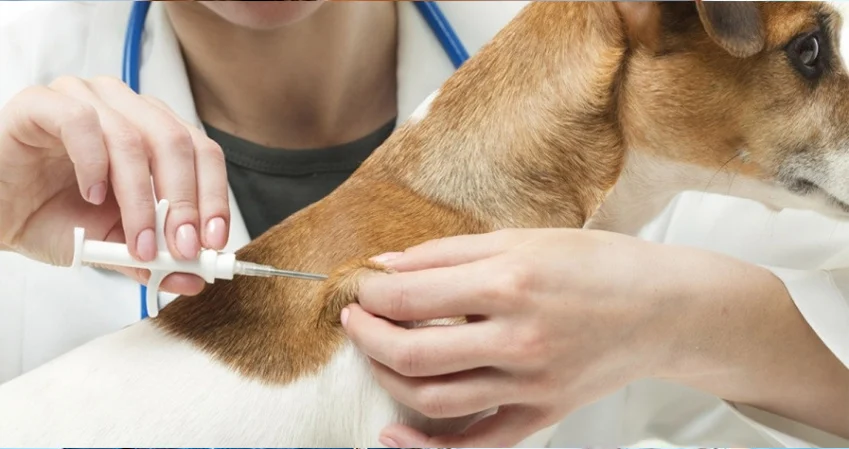
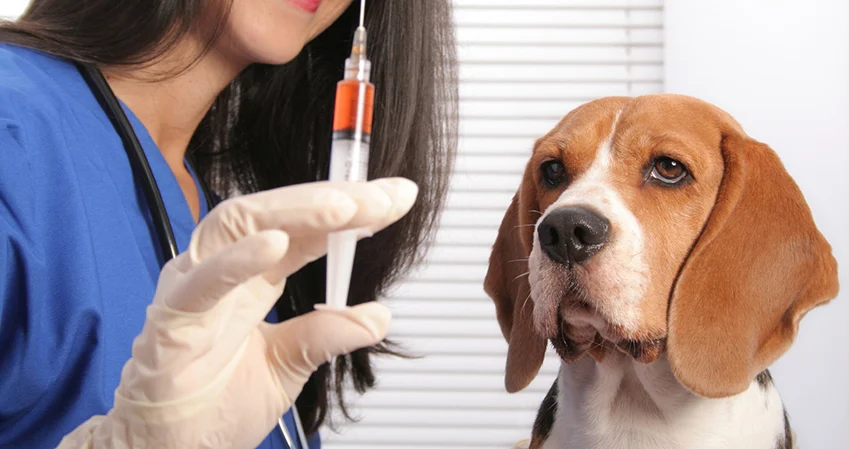 When crossing a border with a pet, vaccinations are checked thoroughly. All vaccines must be recorded in an international veterinary passport. Rabies vaccination is mandatory and must be done annually. The vaccine is only valid if administered after microchipping. If the vaccine was given before microchipping, it will need to be redone. Your pet may cross the border 21 days after receiving the initial rabies vaccine.
If you're importing an animal from a high-risk rabies country, it must also undergo an antibody titer test 30 days after vaccination. Only three months after that can it enter the EU. These rules aim to minimize the risk of disease in the destination country.
To bring a pet into Spain, you will also need a European-format veterinary passport and a veterinary certificate. The passport allows travel within the EU, while the certificate must be issued no more than 10 days before travel and is valid for up to 4 months from the first entry. Once the rabies vaccine expires, the certificate becomes invalid.
When crossing a border with a pet, vaccinations are checked thoroughly. All vaccines must be recorded in an international veterinary passport. Rabies vaccination is mandatory and must be done annually. The vaccine is only valid if administered after microchipping. If the vaccine was given before microchipping, it will need to be redone. Your pet may cross the border 21 days after receiving the initial rabies vaccine.
If you're importing an animal from a high-risk rabies country, it must also undergo an antibody titer test 30 days after vaccination. Only three months after that can it enter the EU. These rules aim to minimize the risk of disease in the destination country.
To bring a pet into Spain, you will also need a European-format veterinary passport and a veterinary certificate. The passport allows travel within the EU, while the certificate must be issued no more than 10 days before travel and is valid for up to 4 months from the first entry. Once the rabies vaccine expires, the certificate becomes invalid.
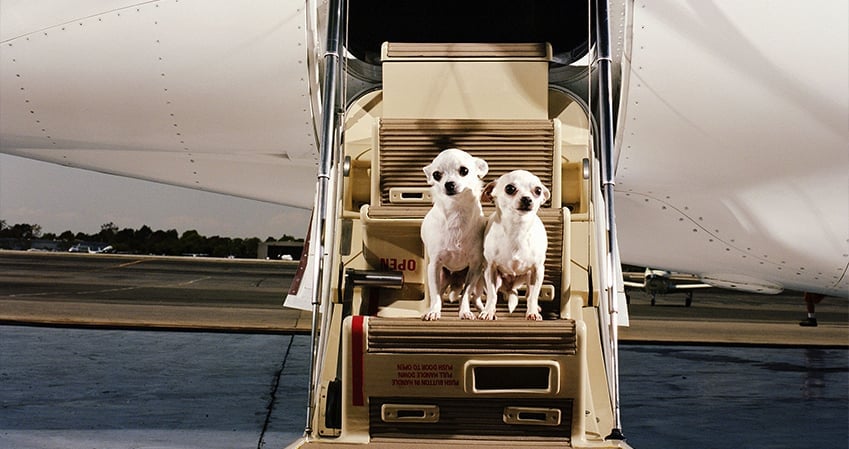 When flying with a pet, choosing the right airline is crucial. Each airline has its own pet policy, so research thoroughly before booking. Pets weighing up to 8 kg can typically travel in the cabin; larger pets must go in the cargo hold.
For cargo travel, you'll need to purchase a crate that complies with IATA (International Air Transport Association) standards. Requirements include:
When flying with a pet, choosing the right airline is crucial. Each airline has its own pet policy, so research thoroughly before booking. Pets weighing up to 8 kg can typically travel in the cabin; larger pets must go in the cargo hold.
For cargo travel, you'll need to purchase a crate that complies with IATA (International Air Transport Association) standards. Requirements include:
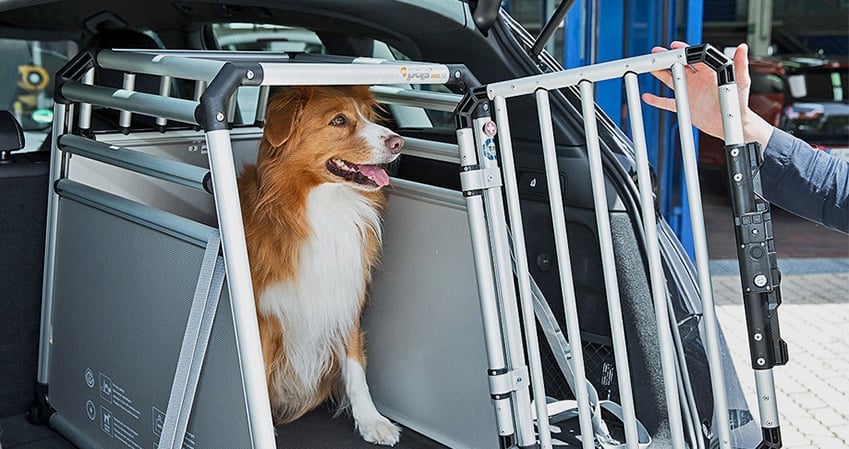 For car travel, use a well-ventilated carrier or crate with a secure door. If you're traveling with a dog, you can secure it with a seatbelt harness. Monitoring your pet during the trip is crucial for safety.
Avoid feeding your pet just before long journeys. Plan breaks so the animal can get fresh air and rest. On sunny days, cover windows with dark cloth or shades to keep the car cool. Make sure you carry all necessary travel documents for your pet.
For car travel, use a well-ventilated carrier or crate with a secure door. If you're traveling with a dog, you can secure it with a seatbelt harness. Monitoring your pet during the trip is crucial for safety.
Avoid feeding your pet just before long journeys. Plan breaks so the animal can get fresh air and rest. On sunny days, cover windows with dark cloth or shades to keep the car cool. Make sure you carry all necessary travel documents for your pet.

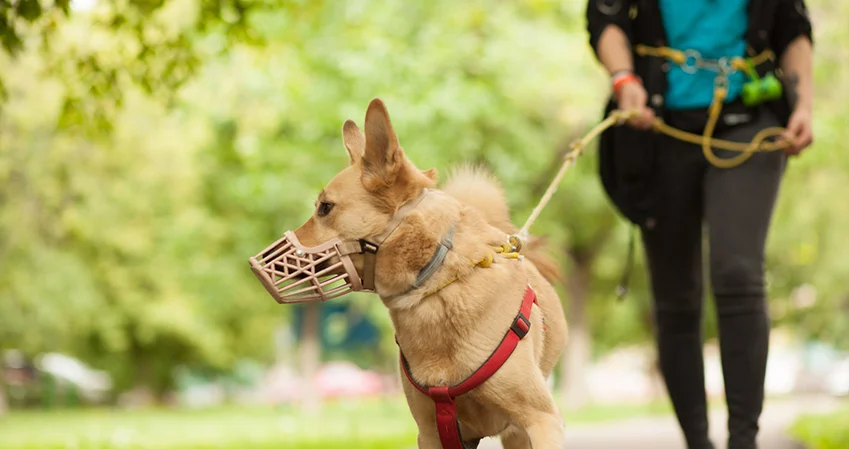 Spain has strict rules about walking pets. Dogs must be leashed during walks and, in some cases, muzzled. It’s forbidden to walk pets by tying them to a moving vehicle. Owners must clean up after their pets or face fines.
Spanish cities have designated pet areas called PipiCan, marked with signs from the city council. These fenced zones offer safe, leash-free space for your pet and are free to use.
Note that during summer, pets are often not allowed on public beaches in Spain. They may be banned from entering the water or even the sand, regardless of leash or muzzle use. However, there are pet-friendly beaches, such as Playa de Llevant in Barcelona and Playa Can Pinedo in Valencia—popular spots for pet owners.
Spain has strict rules about walking pets. Dogs must be leashed during walks and, in some cases, muzzled. It’s forbidden to walk pets by tying them to a moving vehicle. Owners must clean up after their pets or face fines.
Spanish cities have designated pet areas called PipiCan, marked with signs from the city council. These fenced zones offer safe, leash-free space for your pet and are free to use.
Note that during summer, pets are often not allowed on public beaches in Spain. They may be banned from entering the water or even the sand, regardless of leash or muzzle use. However, there are pet-friendly beaches, such as Playa de Llevant in Barcelona and Playa Can Pinedo in Valencia—popular spots for pet owners.
Go back to the blog
Preparing for Transportation

Microchipping
Animal identification is a mandatory step when bringing pets into another country. Your pet must be microchipped before entering Spain. This involves inserting a microchip under the skin or intramuscularly using a special tool. The procedure is painless and safe. The chip contains a unique identification number registered in an international database, which helps locate your pet if it gets lost. If the chip does not comply with ISO standards 11784 and 11785, you’ll need a reader device when entering the EU. An alternative is a tattoo, but it must be clear and easily legible. Tattoos are only valid if applied before July 3, 2011, with proof.Required Vaccinations
 When crossing a border with a pet, vaccinations are checked thoroughly. All vaccines must be recorded in an international veterinary passport. Rabies vaccination is mandatory and must be done annually. The vaccine is only valid if administered after microchipping. If the vaccine was given before microchipping, it will need to be redone. Your pet may cross the border 21 days after receiving the initial rabies vaccine.
If you're importing an animal from a high-risk rabies country, it must also undergo an antibody titer test 30 days after vaccination. Only three months after that can it enter the EU. These rules aim to minimize the risk of disease in the destination country.
To bring a pet into Spain, you will also need a European-format veterinary passport and a veterinary certificate. The passport allows travel within the EU, while the certificate must be issued no more than 10 days before travel and is valid for up to 4 months from the first entry. Once the rabies vaccine expires, the certificate becomes invalid.
When crossing a border with a pet, vaccinations are checked thoroughly. All vaccines must be recorded in an international veterinary passport. Rabies vaccination is mandatory and must be done annually. The vaccine is only valid if administered after microchipping. If the vaccine was given before microchipping, it will need to be redone. Your pet may cross the border 21 days after receiving the initial rabies vaccine.
If you're importing an animal from a high-risk rabies country, it must also undergo an antibody titer test 30 days after vaccination. Only three months after that can it enter the EU. These rules aim to minimize the risk of disease in the destination country.
To bring a pet into Spain, you will also need a European-format veterinary passport and a veterinary certificate. The passport allows travel within the EU, while the certificate must be issued no more than 10 days before travel and is valid for up to 4 months from the first entry. Once the rabies vaccine expires, the certificate becomes invalid.
Pet Transportation Options
Once you’ve gathered the required documents, you can decide how to transport your pet. There are several options, each with its own specifics.Air Travel
 When flying with a pet, choosing the right airline is crucial. Each airline has its own pet policy, so research thoroughly before booking. Pets weighing up to 8 kg can typically travel in the cabin; larger pets must go in the cargo hold.
For cargo travel, you'll need to purchase a crate that complies with IATA (International Air Transport Association) standards. Requirements include:
When flying with a pet, choosing the right airline is crucial. Each airline has its own pet policy, so research thoroughly before booking. Pets weighing up to 8 kg can typically travel in the cabin; larger pets must go in the cargo hold.
For cargo travel, you'll need to purchase a crate that complies with IATA (International Air Transport Association) standards. Requirements include:
- Size: The crate must be spacious enough for the animal to stand, turn around, and lie down. The total weight (crate + pet) should not exceed 50 kg.
- Material: It must be sturdy—plastic or steel—to ensure the pet’s safety.
- Ventilation: Proper airflow is essential for your pet’s comfort.
- Locking Mechanism: A secure lock is required so your pet cannot escape.
- Labeling: Mark the crate with your pet’s name, breed, and weight.
- Harness: Some airlines may require a harness or collar inside the crate.
Car Travel
 For car travel, use a well-ventilated carrier or crate with a secure door. If you're traveling with a dog, you can secure it with a seatbelt harness. Monitoring your pet during the trip is crucial for safety.
Avoid feeding your pet just before long journeys. Plan breaks so the animal can get fresh air and rest. On sunny days, cover windows with dark cloth or shades to keep the car cool. Make sure you carry all necessary travel documents for your pet.
For car travel, use a well-ventilated carrier or crate with a secure door. If you're traveling with a dog, you can secure it with a seatbelt harness. Monitoring your pet during the trip is crucial for safety.
Avoid feeding your pet just before long journeys. Plan breaks so the animal can get fresh air and rest. On sunny days, cover windows with dark cloth or shades to keep the car cool. Make sure you carry all necessary travel documents for your pet.
Border Crossing Process
At the Spanish border, have your pet’s documents ready. If your pet is traveling in the cargo hold, collect it from the oversized luggage area. When passing through the "red corridor" at customs, present original veterinary certificates issued in the departure country. This will help you avoid delays and ensure a smooth border crossing.Tips for Air Travel Preparation

Avoiding Sedatives
Medication should only be used under the guidance of a vet. If your pet requires calming medication, begin administration 2–3 weeks before the trip. Giving sedatives right before the journey can negatively affect your pet. Never rely on advice from friends or online forums. Every pet is different, and a vet will prescribe the right treatment during a consultation. Properly prescribed meds can help reduce travel stress.Preparing the Crate
Ensure the crate is secure and doesn’t restrict your pet’s movement. Your pet should be able to stand, turn, and lie down. Make it comfortable by adding soft bedding and a water container. Check that all locks are tight and won’t open during transport. You can reinforce the crate door with zip ties. If your pet is flying in the cargo hold, make sure the lock won’t come undone from turbulence. Attach a tag with your pet’s name in both Cyrillic and Latin alphabets, your phone number, and your address.Keeping Pets in Spain
There is no tax on pet ownership in Spain, which is great news for pet owners. However, there are general rules, such as maintaining quiet and not disturbing neighbors. Authorities occasionally conduct inspections to check living conditions. Your pet must have all required vaccinations, access to clean water, and quality food. Pets must live in healthy, safe conditions. Spain also has a new law requiring dog owners to pass a basic test on pet care. The test includes questions about canine health, grooming, and general care rules. For example, it’s illegal to leave a dog home alone for more than 24 hours. You must also purchase pet insurance, which typically costs between €20 and €50 per year.Walking and Pet Services
 Spain has strict rules about walking pets. Dogs must be leashed during walks and, in some cases, muzzled. It’s forbidden to walk pets by tying them to a moving vehicle. Owners must clean up after their pets or face fines.
Spanish cities have designated pet areas called PipiCan, marked with signs from the city council. These fenced zones offer safe, leash-free space for your pet and are free to use.
Note that during summer, pets are often not allowed on public beaches in Spain. They may be banned from entering the water or even the sand, regardless of leash or muzzle use. However, there are pet-friendly beaches, such as Playa de Llevant in Barcelona and Playa Can Pinedo in Valencia—popular spots for pet owners.
Spain has strict rules about walking pets. Dogs must be leashed during walks and, in some cases, muzzled. It’s forbidden to walk pets by tying them to a moving vehicle. Owners must clean up after their pets or face fines.
Spanish cities have designated pet areas called PipiCan, marked with signs from the city council. These fenced zones offer safe, leash-free space for your pet and are free to use.
Note that during summer, pets are often not allowed on public beaches in Spain. They may be banned from entering the water or even the sand, regardless of leash or muzzle use. However, there are pet-friendly beaches, such as Playa de Llevant in Barcelona and Playa Can Pinedo in Valencia—popular spots for pet owners.


 12/05/2025
12/05/2025  Reading time: 6 min
Reading time: 6 min 



